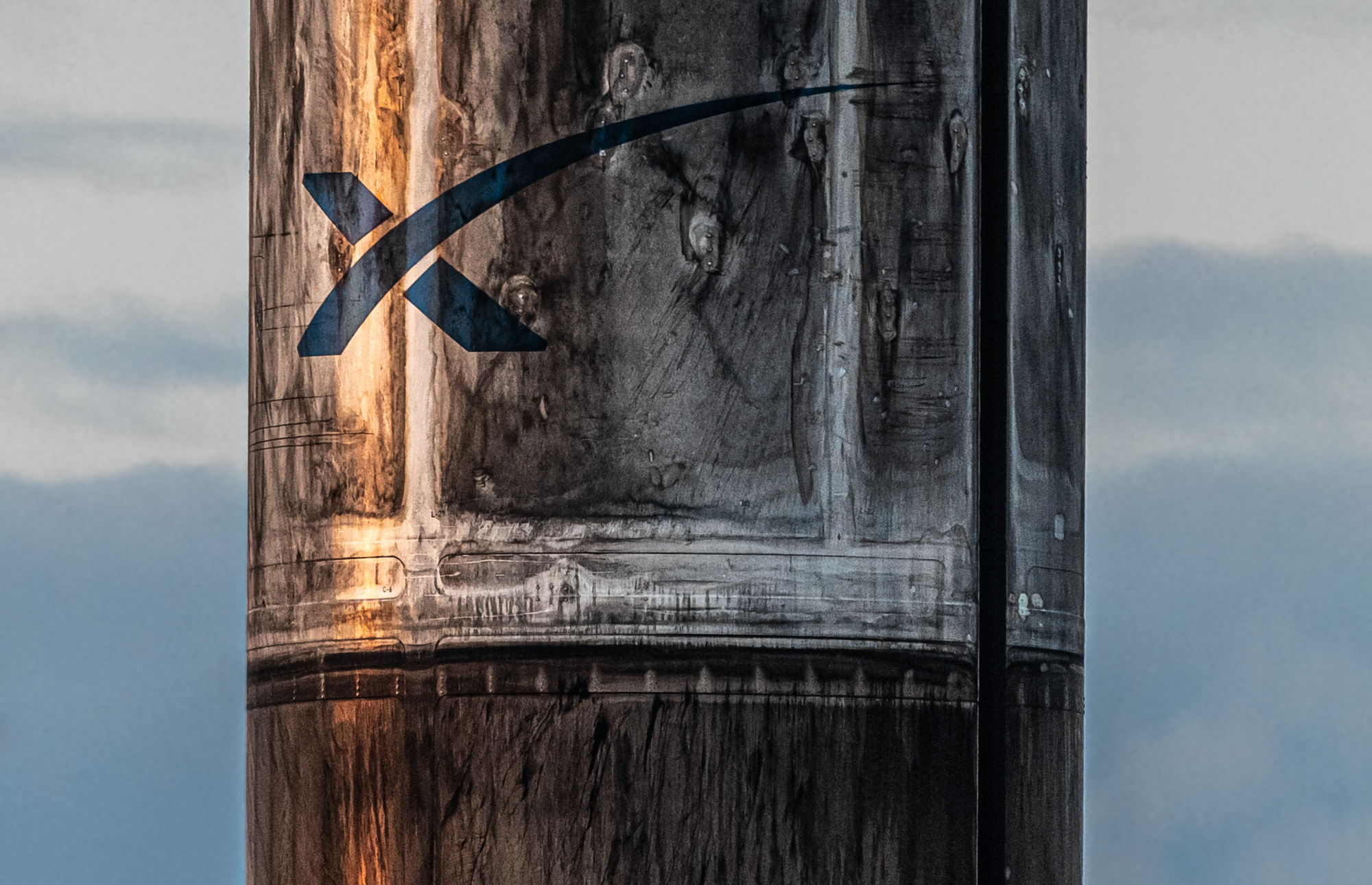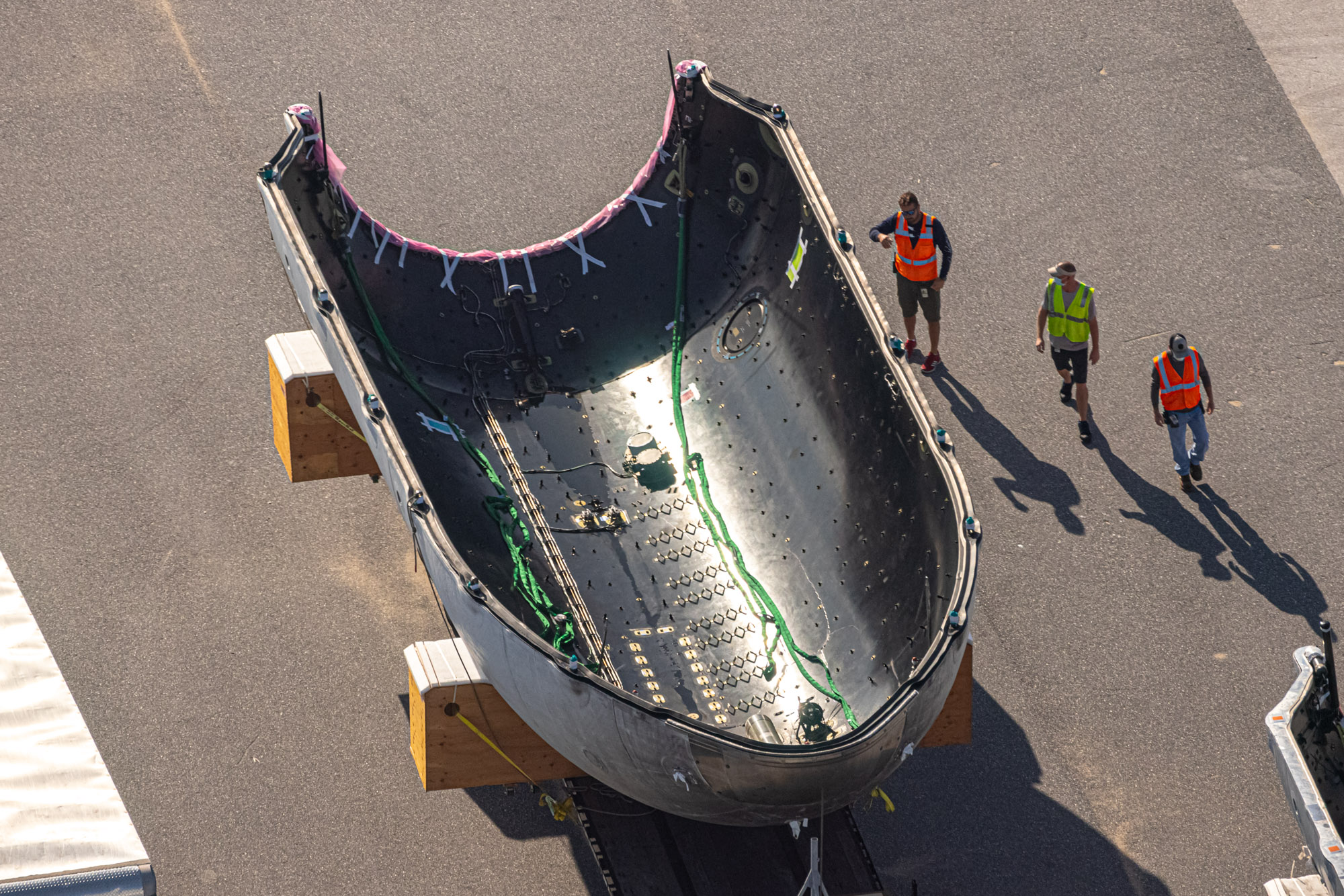
The launch of the 14th batch of Starlink satellites, a project to provide high-speed broadband Internet access to the entire planet, has been successfully completed. A new batch of 60 spacecraft has joined the 773 satellites already in orbit (including test ones).
The launches themselves are already surprising to few: in October, the Falcon 9 rocket with satellites traveled into space twice. Surprisingly, the first stage of the Falcon 9 rocket returns for the sixth time. And one fairing has been used three times already. We tell how Elon Musk's company returns multi-ton components of rockets from heaven to earth.
And under the cut - a lot of photos of members of the transportation process of the Falcon 9 .
On October 18, at 8:25 am ET, a Falcon 9 rocket with 60 orbital communications satellites launched from the Cape Canaveral Cosmodrome in Florida. There are now 835 Starlink satellites in orbit.
A few minutes after launch, SpaceX announced the successful landing of the first stage of the rocket on the floating platform "Of Course I Still Love You" in the Atlantic Ocean. This was her sixth launch and landing.

"Used" rockets
SpaceX has dreamed of the idea of "second-hand" rockets since 2011. Elon Musk was 100% sure that it was the opportunity to save on launches that would reduce the cost of the space industry. In 2016, he cited the following figures: the cost of one Falcon 9 is about $ 60 million, fueling the rocket and delivery to the launch site costs about $ 50-60 thousand.
Reusing the first stage of the launch vehicle reduces the cost of launching the same Starlink satellites into orbit. $ 10-20 million. For comparison, disposable rocket launch from Baikonur costs about $ 200 million.
As learned scholars MSTU. Bauman, the cost of launching with a reusable first stage is reduced by 20-30%, and with an increase in the frequency of starts, their cost can be reduced by more than 50%.
Elon Musk now claims that all of his rockets are 80% reusable, and other elements, including fairings, are reused. Now the company is mainly spent on the development of the second stage of the Falcon 9 with a liquid propellant rocket engine Merlin Vacuum.


For the first time, SpaceX managed to return parts of its rockets in 2015 - among them the first stage and nose cone.
First stage
The first stage of the rocket is 14-story high and contains the fuel and all the main engines needed to launch the rocket. This is the most expensive part of it, leaving it behind after launch is too expensive.
How does return work? A few minutes after launch, the first stage is separated from the rocket, then SpaceX employees carry out a remote-controlled landing at the cosmodrome or on an autonomous platform in the ocean.
Head fairing


Another "second-hand" component of SpaceX rockets is the nose fairing. In order to return its halves without any problems, the designers of the company added a guided parachute and engines to the fairing.
After the first commercial launch of the Falcon Heavy rocket in 2019, both halves of the fairing made a soft landing on the water, after which SpaceX specialists "evacuated" them from the water to the ship. Later that year, the fairing was reused. Following the recent launch on October 6, 2020, one of the fairing flaps, used twice in previous missions, was caught in the surface nets of the Ms. Tree ".

Is everything smooth?
Elon Musk considers the already used elements of the missiles as reliable, since they have passed the "battle" test. Despite the skepticism of some in the space industry, the company will continue to use used components - clearly profitable. The main thing is that they do not become the reason for canceling launches. The cancellation of the launch of the Falcon 9 rocket with the GPS III satellite two seconds before the launch, presumably due to problems with the turbo engine, became alarming. The cause of the problem has not yet been clarified.
As a result, NASA also postponed the launch of its Crew-1 mission to the International Space Station, which was supposed to take place on a Falcon 9 rocket, pending clarification.

Next start
The launch of the next batch of Starlink satellites is scheduled for October 22. If Mission 14 succeeds (it has already been rescheduled from October 21), this will be the third Starlink launch in a month.
The Starlink project plan involves the launch of about 12,000 satellites. The declared bandwidth of the Internet coverage system will be one gigabit per second per user. The company is expected to launch an available satellite pool by the end of this year, giving access to the network to a certain number of users.


